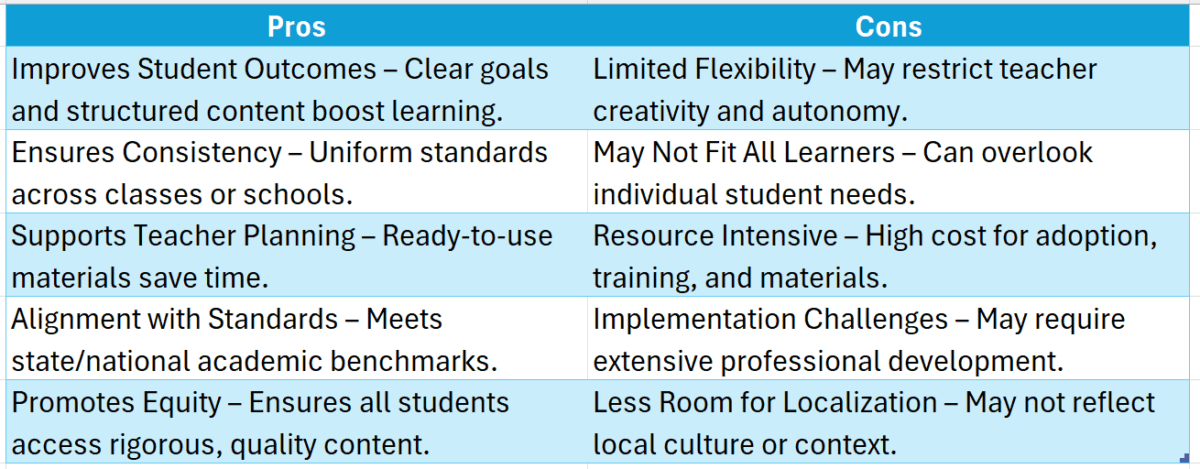
In today’s fast-paced world, understanding what defines a high-quality curriculum in modern education is essential. A well-designed curriculum equips students with vital knowledge and prepares them for future challenges. As education evolves, so do the expectations of what a curriculum should offer. Let’s explore the core elements that make a curriculum exceptional.
Relevance and Real-World Application
A high-quality curriculum connects classroom learning to real-world scenarios. Courses like artificial intelligence and data science prepare students for careers in booming fields, keeping them engaged and motivated.
Flexibility and Adaptability
Flexibility is crucial; a curriculum must adapt to diverse student needs. Curriculum designer remote jobs allow professionals to create customized learning experiences, catering to different learning styles and ensuring every student thrives.
Continuous Improvement
A high-quality curriculum is dynamic and evolves through regular feedback from students and educators. This keeps it current with educational trends and industry demands, fostering continuous improvement.
Inclusivity and Diversity
Inclusivity is vital. A high-quality curriculum embraces diverse perspectives, integrating multicultural content that prepares students for a globalized world.
Engaging Learning Experiences
Finally, a high-quality curriculum emphasizes engaging learning experiences. Interactive activities and technology integration enhance understanding and make learning enjoyable, leading to better retention.
Affordable, accredited education—Start now!
What Role Does Student Engagement Play in Curriculum Quality?

In today’s fast-paced world, understanding what defines a high-quality curriculum in modern education is crucial. A curriculum that engages students not only enhances learning but also prepares them for future challenges. So, what role does student engagement play in curriculum quality? Let’s dive in!
Student engagement is the heartbeat of a high-quality curriculum. When students are actively involved, they are more likely to absorb information and develop critical thinking skills. Here are some key aspects of engagement:
- Interactive Learning: Incorporating hands-on activities makes lessons more enjoyable. For example, an artificial intelligence and data science course can include projects that allow students to experiment with real data.
- Relevance: Connecting lessons to students’ lives keeps them interested. A curriculum designer in remote jobs can create content that resonates with diverse backgrounds.
- Feedback: Encouraging students to share their thoughts helps refine the curriculum. This two-way communication fosters a sense of ownership and responsibility in learners.
The Importance of Inclusivity in Modern Curriculum Design
In today’s fast-paced world, understanding what defines a high-quality curriculum in modern education is crucial. A curriculum that embraces inclusivity not only enhances learning but also prepares students for a diverse society. This is especially important for curriculum designers, including those in remote jobs, who must create engaging and relevant content for all learners.
Inclusivity in curriculum design means ensuring that every student feels represented and valued. Here are some key aspects to consider:
Diverse Perspectives
- Incorporate materials that reflect various cultures and backgrounds.
- Use examples from different fields, such as an artificial intelligence and data science course, to show real-world applications.
Accessibility
- Ensure resources are available for students with different learning needs.
- Provide multiple formats for content, like videos, texts, and interactive activities.
Engagement
- Create lessons that encourage participation from all students.
- Use collaborative projects to foster teamwork and understanding among peers.
By focusing on inclusivity, curriculum designers can create a high-quality curriculum that not only meets educational standards but also resonates with students. This approach helps build a supportive learning environment where everyone can thrive, ultimately leading to better educational outcomes.
How Technology Enhances the High-Quality Curriculum Experience
In today’s fast-paced world, understanding what defines a high-quality curriculum in modern education is essential. A well-designed curriculum not only engages students but also prepares them for future challenges. With the rise of technology, educators are finding innovative ways to enhance learning experiences, making education more accessible and effective.
Engaging Learning Tools
- Interactive Platforms: Technology allows curriculum designers to create interactive platforms that make learning fun. Students can explore subjects like artificial intelligence and data science through engaging simulations and games.
- Online Resources: Access to a wealth of online resources means students can dive deeper into topics, enhancing their understanding and curiosity.
Personalized Learning
- Tailored Experiences: With technology, educators can customize lessons to meet individual student needs. This personalization helps every learner thrive, making a high-quality curriculum more effective.
- Data-Driven Insights: Curriculum designers can analyze student performance data to refine their approaches, ensuring that the curriculum remains relevant and impactful. In conclusion, technology plays a crucial role in shaping a high-quality curriculum.
By embracing these tools, educators can create enriching experiences that prepare students for the future, including exciting fields like artificial intelligence and data science. This evolution opens up new curriculum designer remote jobs, making education more dynamic than ever.
Assessing Curriculum Effectiveness: Metrics and Methods
Assessing the effectiveness of a high-quality curriculum is crucial in modern education. It helps educators understand what works and what doesn’t, ensuring students receive the best possible learning experience. With the rise of remote learning and innovative courses like artificial intelligence and data science, knowing how to measure curriculum success has never been more important.
Key Metrics to Consider
- Student Engagement: Are students actively participating in lessons? High engagement often indicates a strong curriculum.
- Learning Outcomes: Are students meeting or exceeding learning goals? This is a direct reflection of curriculum quality.
- Feedback from Educators: Teachers’ insights can provide valuable information about what aspects of the curriculum are effective or need improvement.
Methods for Evaluation
- Surveys and Questionnaires: Collect feedback from students and teachers to gauge satisfaction and areas for growth.
- Performance Assessments: Use tests and projects to measure students’ understanding of the material.
- Curriculum Reviews: Regularly review and update the curriculum to ensure it remains relevant, especially for subjects like data science.
Incorporating these metrics and methods can help curriculum designers, even those in remote jobs, create a high-quality curriculum that meets the needs of today’s learners.
Affordable, accredited education—Start now!
What Are the Challenges in Developing a High-Quality Curriculum?
Creating a high-quality curriculum is essential in modern education. It shapes how students learn and prepares them for the future. However, developing such a curriculum comes with its own set of challenges that curriculum designers must navigate carefully.
Balancing Content and Skills
One major challenge is balancing content knowledge with essential skills. For instance, a curriculum that includes an artificial intelligence and data science course must not only teach facts but also how to think critically and solve problems. This balance is crucial for student success.
Keeping Up with Trends
Another challenge is staying updated with educational trends. With the rise of technology, curriculum designers often seek curriculum designer remote jobs to access diverse ideas. They need to incorporate new tools and methods to keep lessons engaging and relevant.
Meeting Diverse Needs
Lastly, a high-quality curriculum must cater to diverse learning needs. Students come from various backgrounds and have different learning styles. Therefore, creating inclusive materials that resonate with everyone is vital for effective education.
How Can Degreesonline.education Support Your Curriculum Development Needs?
In today’s fast-paced world, understanding what defines a high-quality curriculum in modern education is crucial. A well-designed curriculum not only engages students but also prepares them for future challenges. It’s about creating a learning environment that fosters critical thinking and creativity, essential skills in our rapidly evolving society.
Tailored Curriculum Solutions
At Degreesonline.education, we recognize that every educational institution has unique needs. Our team of expert curriculum designers specializes in crafting high-quality curriculum tailored to your specific goals. Whether you’re looking to develop an artificial intelligence and data science course or enhance existing programs, we’ve got you covered.
Remote Curriculum Designer Jobs
Additionally, we offer opportunities for curriculum designer remote jobs, allowing talented educators to contribute from anywhere. This flexibility not only broadens our talent pool but also ensures that diverse perspectives are included in the curriculum development process. Together, we can create a curriculum that truly resonates with students and prepares them for the future.
Future Trends: What Will a High-Quality Curriculum Look Like in 2030?
In today’s evolving educational landscape, defining a high-quality curriculum is essential. As we approach 2030, curriculums must not only meet current standards but also equip students for future challenges. Curriculum designers, especially in remote roles, will play a pivotal role in this transformation.
Embracing Technology
A high-quality curriculum will integrate technology extensively. Courses like artificial intelligence and data science will be vital, teaching students to create technology, not just use it, preparing them for future careers.
Personalized Learning Experiences
Personalization will be crucial, with curriculums adapting to individual learning styles. This approach will enhance engagement and retention, making learning enjoyable for all students.
Collaborative Learning
Collaboration will also be emphasized. Students will work on projects together, developing social skills and preparing for real-world challenges through teamwork.
Global Perspectives
Additionally, curriculums will incorporate global perspectives, teaching students about diverse cultures and issues, fostering empathy and responsible citizenship.
Lifelong Learning Skills
Lastly, a focus on lifelong learning will be essential. Students will learn to adapt independently, ensuring they remain competitive in the job market, particularly in fields like data science.
Affordable, accredited education—Start now!
FAQs
1. What is a high-quality curriculum?
A high-quality curriculum is standards-aligned, research-based, and designed to support student learning through clear goals, effective materials, and strong instructional practices.
2. Why is a high-quality curriculum important?
It ensures consistency in teaching, improves student outcomes, supports teachers, and promotes equity across classrooms and schools.
3. What are the key features of a high-quality curriculum?
It includes rigorous content, aligns with academic standards, provides support for diverse learners, and includes assessments to track progress.
4. How does it support teachers?
It offers ready-to-use lesson plans, instructional materials, and guidance—helping teachers focus more on instruction and student engagement.
5. Does it benefit all students?
Yes, it provides structured learning experiences that support students of all backgrounds, including English language learners and students with disabilities.
6. Can schools adapt a high-quality curriculum?
Absolutely. While maintaining core standards, schools can modify materials to fit local needs, cultures, and student interests.




